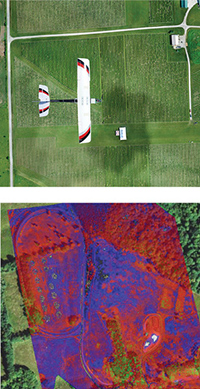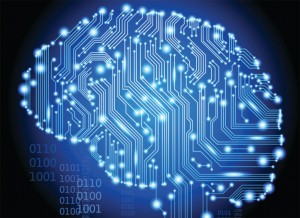May 14, 2014 – The editors of MIT Technology Review have released their annual list of those technological advances they deem to be impactful enough to influence the future. Each is considered a milestone in problem solving related to current challenges we on this planet face.
Here is their list:
1. Agricultural drones costing less than $1,000 U.S. are the latest farm tools for managing crops from planting to harvest. From airplanes to quadcopters these drones are equipped with cameras, GPS, accelerometers, gyros, magnetometers, pressure sensors and radio frequency communications to build a complex photographic representation of an entire farm. On-board cameras reveal patterns very difficult to detect from a ground level view. Infrared views help detect where water is and isn’t reaching crops, and see early onset of insect, weed or fungus threats. They can be flown just above a field or have provide a bird’s eye view, and they can do this every day capturing changes in real-time and delivering the data and images directly to a farmer’s computer system. The top image below shows an airplane drone from Precision Hawk flying over a field. The drone is equipped with multiple sensors, not just cameras. The bottom image provides an infrared view of a farmer’s field showing the chlorophyll levels of crops.
2. Private Smartphone technology has emerged because of the fallout from the National Security Agency’s admission of snooping on people’s transmissions. What’s involved? New encryption technology built into smartphones. One company is releasing what is calls the Blackphone running a version of the Android operating system called Private OS. It blocks the leaking of data from texts, conversations, and the user’s web activities.
3. Brain Mapping by projects like the Human Brain Project and U.S. Brain Initiative are giving us a detailed picture of the anatomy of our brain and a better understanding of how it works. Neuroscientists should have a roadmap of all brain functions and a reference brain image database that provides details down to individual nerve cells and fibers. How does an anatomical map of such detail help us? Can a detailed circuit diagram of the inside of our heads help us understand and cure mental illness? Neuroscientists believe brain mapping will reveal what goes wrong within the brains wiring that is associated with depression, schizophrenia and other mental health disorders.
4. Neuromorphic Chips work like our brains and represent the next dimensional leap in processors used in computers. Unlike the IBM Watson computer that successfully trumped the best human Jeopardy players, and was built using a room-sized array of parallel processors, a neuromorphic chip-equipped computer would be no bigger than a laptop or desktop system. Computers with these chips would interact with the world in a manner similar to us. They would view images and sound and respond to these inputs not because of programming code but through observation and learning. This represents a great leap forward in the development of artificial intelligence. The new neuromorphic chips are silicon based but are not designed in any way like the architecture of the computer I am working on to write this blog posting. My computer sends data back and forth from the central processor to the memory chips in a linear sequence. The neuromorphic chips interact as a neural network making new connections in response to sensory inputs just like our human brain.
5. Genome Editing has the potential to address diseases with known genetic roots. These include mental health diseases like autism, schizophrenia, Alzheimer’s, and congenital diseases that impact the heart, lungs, gut, pancreas and other vital organs. At its worst our ability to alter the human genome could lead to eugenic science focused on perfecting the species to create super bright individuals and super athletes. But at its best it will help us reduce the number of children born with multiple gene defects that lead to heart disease, cystic fibrosis and juvenile diabetes. Tools like CRISPR are leading the way, capable of re-engineering defective genes in chromosomes. Parents who have their DNA mapped within the decade will have the option to intervene in ways never previously contemplated by having doctors alter their future child’s genome to remove genes linked to disorders. Today we are doing it with primates in the lab. Within the next two decades we may be doing it with human embryos in petri dishes as part of routine genetic diagnosis and treatment.
























